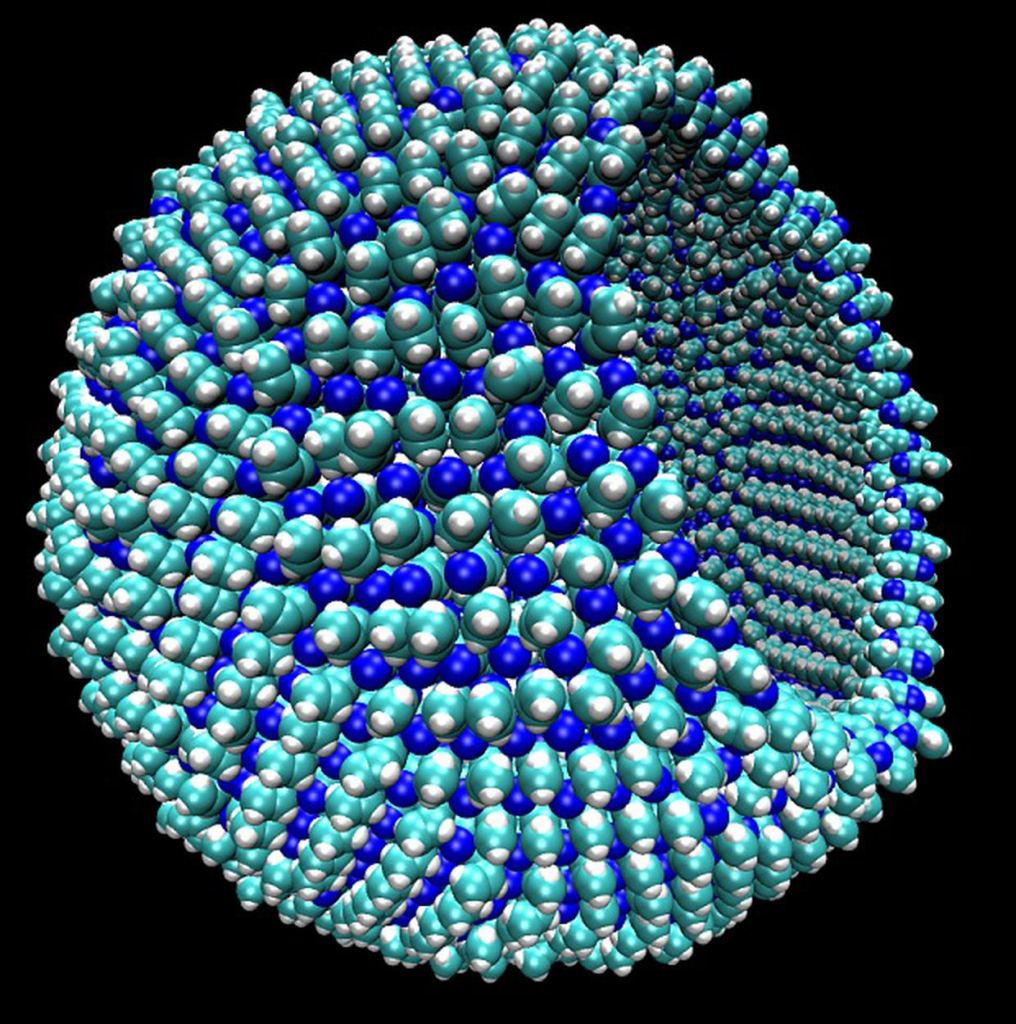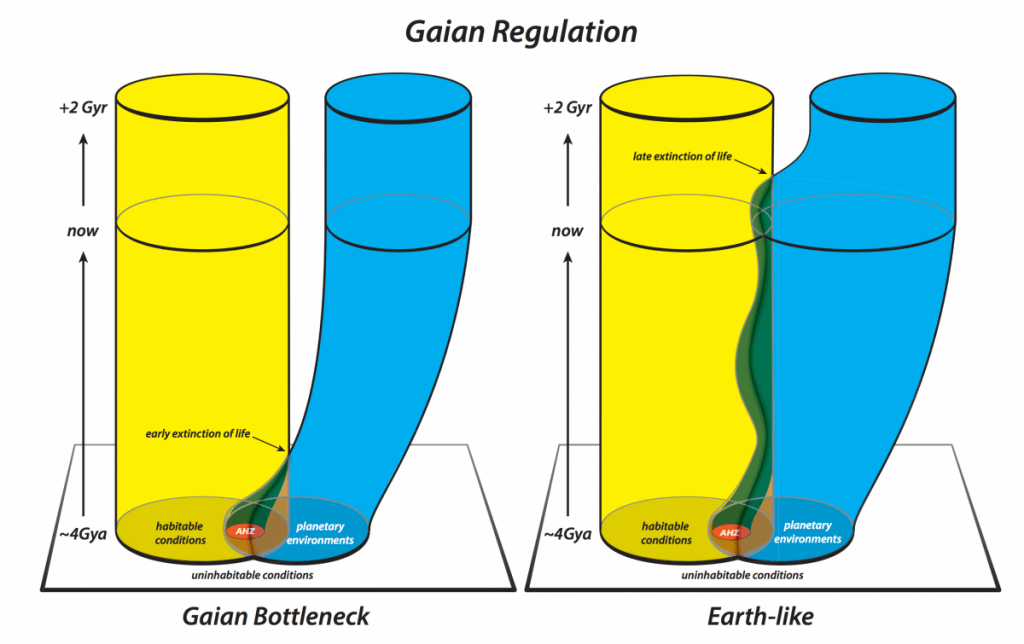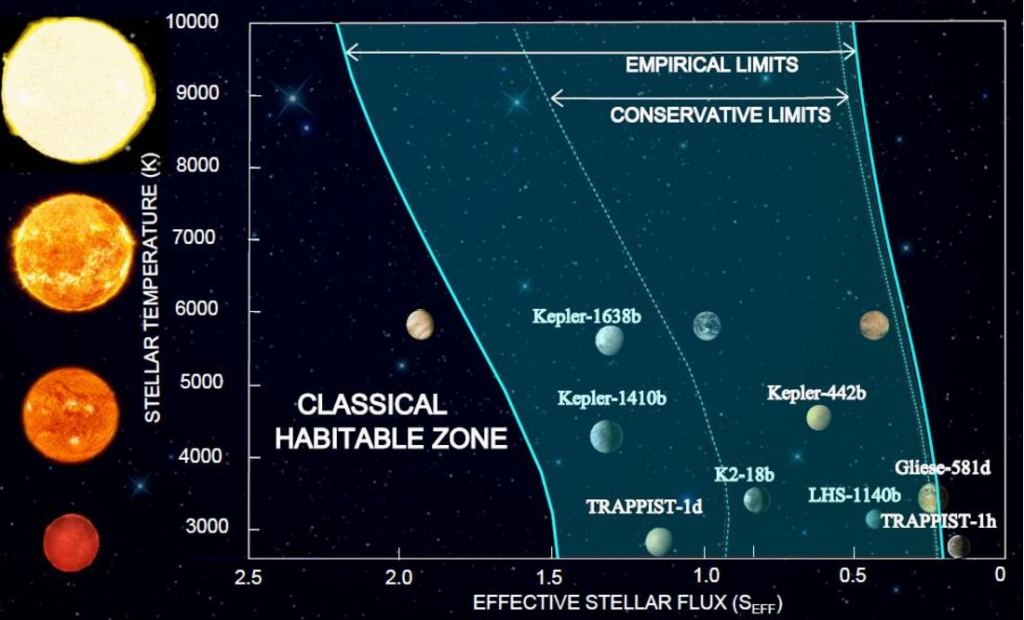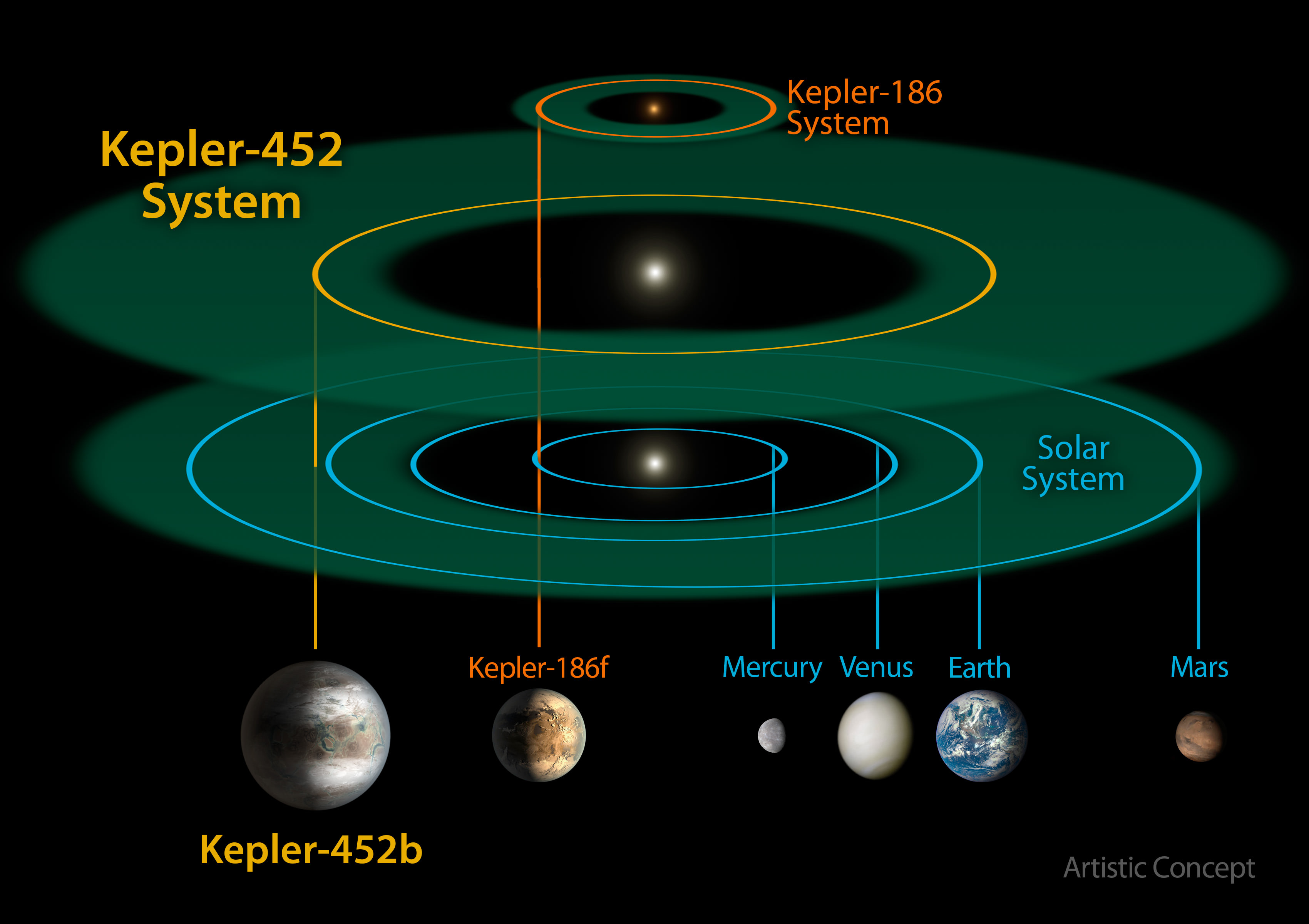In our search for exoplanets, we have found more than three dozen potentially habitable worlds. It’s estimated that there are 8 to 20 billion potentially habitable, Earth-like worlds in our galaxy alone. But there is a big difference between potentially habitable and actually habitable, and scientists are starting to narrow their definitions.

The classic definition of a potentially habitable world is a rocky planet that can sustain liquid water on its surface. That means it has a reasonably thick atmosphere, and its distance from a star puts it in the so-called habitable zone.
In many ways, this simple definition is both too broad and too narrow. Liquid water is considered a defining factor because it is central to life on Earth. There could be other forms of life that don’t require liquid. Saturn’s moon Titan has seas of liquid methane, and some researchers have studied how methane could play a role in alien cells similar to the role of water in terrestrial life. Even if we limit life to being Earth-like, being outside of the habitable zone doesn’t prohibit liquid water. Jupiter is far outside the zone but has at least two moons with liquid water under their icy surface.

At the same time, being in the zone is not enough. There are three rocky planets in the Sun’s habitable zone, but Venus is a toxic greenhouse world, and while Mars might have primitive life it is hardly the rich Eden of Earth. And both Venus and Mars had liquid surface water in their youth. Life may have gotten a toe-hold on both worlds, but may not have survived long enough to stay habitable. This Gaian bottleneck may act as a Great Filter, killing off potentially habitable worlds early on.
Even if we just consider the habitable zone of a star, this says nothing about the stability of the star itself. Most potentially habitable worlds orbit small red dwarf stars since they make up nearly 75% of all stars. Red dwarfs are much cooler than our Sun, so their habitable zones are very close to the star. But red dwarfs often go through periods where they emit huge solar flares and bursts of x-rays. These would likely strip potentially habitable planets of their atmospheres.

All of this gives astronomers plenty of fodder for speculation, but for biologists, it all comes down to lipids. Lipids are built from fatty acids, and they form the building blocks of cellular membranes. For cells to function, cellular membranes need to be permeable, and permeability depends on the composition and pressure of the atmosphere. Recently, a paper in Scientific Reports examined this relationship and its effect on habitability.
The paper looks at the tolerance limits for the lipid solubility of carbon dioxide and nitrogen. Based on data from both anesthesia and scuba diving, it puts the limit at 0.1 bar for carbon dioxide and 2 bar for nitrogen. This limit narrows the habitable zone for stars, particularly on the cooler range. For our solar system, it puts Mars and Venus outside the zone. The decrease is most significant for red dwarf stars. While red dwarfs are common, they may have a much lower chance of harboring life.
It should be stressed that this is still based upon what we know about life on Earth. But it’s an important study. The number of known exoplanets is growing exponentially, and studies like this will help us narrow down candidates were life could exist.
[^1]: Stevenson, James, Jonathan Lunine, and Paulette Clancy. “Membrane alternatives in worlds without oxygen: Creation of an azotosome.” Science Advances 1.1 (2015): e1400067.
[^2]: Chopra, Aditya, and Charles H. Lineweaver. “The case for a Gaian bottleneck: the biology of habitability.” Astrobiology 16.1 (2016): 7-22.
[^3]: Ramirez, Ramses M. “A Complex Life Habitable Zone Based On Lipid Solubility Theory.” Scientific Reports 10.1 (2020): 1-8.

